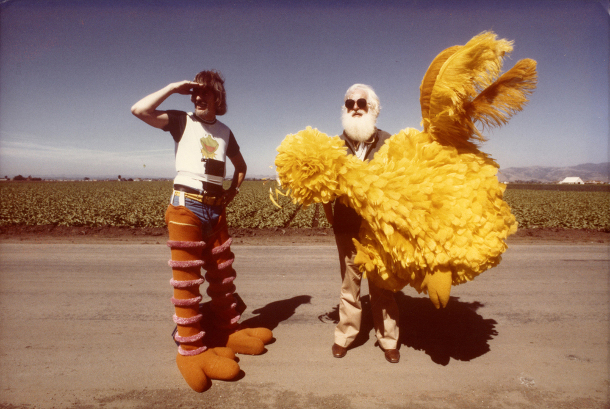An Enemy of the People (1989)
Cast: Soumitra Chatterjee, Dhritiman Chatterjee, Dipankar Dey
Director: Satyajit Ray
Country: India
Genre: Drama
Official Site: Here
Editor’s Notes: The following review is part of our coverage for TIFF’s The Sun and the Moon: The Films of Satyajit Ray. For more information on upcoming TIFF film series visit http://tiff.net and follow TIFF on Twitter at @TIFF_NET.
There are moments in An Enemy of the People, Satyajit Ray’s third to last feature, that are moving and compelling and make for a near great film. Unfortunately, those moments are nearly all in the last 30 minutes of this slow-paced film and are almost undone by a less-than-satisfying conclusion. This is odd for Ray, whose films are normally captivating from start to finish.
The story is in some ways similar to Akira Kurosawa’s underappreciated masterpiece Drunken Angel. Both are about a doctor’s quest to stamp out a disease in a small town, but instead of tuberculosis, Dr. Ashok Gupta (Soumitra Chatterjee) is trying to stop the spread of infectious hepatitis and instead of battling alcoholism he is battling the local government and temple authorities, led by his brother (who is the Municipal Chairman, like the leader of the city council), Nishit (Dhritiman Chatterjee).
This is odd for Ray, whose films are normally captivating from start to finish.
The trouble starts when Dr. Gupta receives verification from Calcutta that the water in a section of the city is contaminated and the pipes need to be dug up and repaired or there will be an epidemic of infectious hepatitis in the city. What sounds logical hits roadblocks when it happens that the local temple, a tourist attraction and big money earner, is in that part of town. So Dr. Gupta is claiming that the holy water is making people sick, which sparks outrage. The temple authorities insist that because it is holy water it cannot be impure and therefore Gupta is wrong.
Gupta pens an editorial for a newspaper sympathetic to his cause, who then refuses to run the article because it would negatively impact subscriptions. Gupta decides to hold a public meeting to read his article but that is hijacked by Nishit and the newspaper editor and his publisher/printer and Nishit whips up a lot of angry sentiment toward his brother. This is the scene that is the most gut wrenching to watch, and the most compelling. To see the two actors, especially Dhritiman Chatterjee, spar with one another, a devilish look always in Nishit’s eyes as he defames his own brother, is mesmerizing.
Unfortunately it come so late in the film that it feels like all the time leading up to it was wasted on lesser stuff. Ray is uncharacteristically static throughout the film, neither adding momentum through his camera or his screenplay, based on the Henrik Ibsen play. It feels like Ray didn’t get a handle on how to translate the play into a film until it was too late, so he just ran with what he had.
That’s not to say the rest of the film is bad, it just isn’t as interesting and pales in comparison to that last half hour or so. As the film slowly moves along, it’s interesting to see a man who knows what he is doing is right only to be road blocked by a jealous younger brother. There are layers to the story whose surfaces are only scratched until that assembly sequence.
There is an attempt to pit science against religion and to expose the corruption of the powerful in the quest for more power throughout the film, but it never really comes alive.
There is an attempt to pit science against religion and to expose the corruption of the powerful in the quest for more power throughout the film, but it never really comes alive. It keeps building and then diffusing nearly immediately, either as a result of pacing or simply transitioning into something related but different. The scenes with Gupta and his family are stale but necessary. There’s no spark between them and it feels like the actors are just reading lines instead of creating characters.
Something else that is atypical for Ray is the way the film looks. It has the look and feel of a TV drama instead of a feature film, right down to the 1.33:1 aspect ratio used before widescreen formats were used and subsequently adopted by television (until the widescreen TVs of today). If it were originally made for television, I could understand the diffusion of tension and stretching and reiterating of themes because of commercial breaks, but nothing I can find leads me to believe this was originally for television but it was always a feature film. It’s lit badly and the camera hardly ever moves, also quite unusual for Ray.
What I do admire about it is the boldness in the confrontation of religious fanaticism. The film never says that religion is bad, but it does speak out against blindly believing in something that has been proven to be in error, like the contaminated holy water. To Gupta, the water supply to the temple is contaminated and therefore every drop of water is a potential infectious agent, but to the temple leader and the extreme believers the addition of a specific herb is traditionally said to remove all impurities and since that is a regular additive to the holy water, it therefore cannot be contaminated. This is a classic example of faith without reason becoming superstition (which is an old Catholic viewpoint, which is followed by “reason without faith leads to nihilism and relativism”) and Ray makes no bones about saying this with his film. I just wish he did it with more force throughout instead of truncating his sequences with Gupta staring off mystified that people are willing to let people continue to become infected and die because they don’t want to lose the revenue stream the temple provides and turns it into a religious argument. That is another thing I admire about the film: its willingness to show that some politicians (in this case a conservative one) are willing to put people’s lives in danger just so something they had a hand in making isn’t defamed (Nishit was the councilmember who proposed and got the temple built ten years prior).
With all this going for it, it is really a shame that pacing and perfunctory acting throughout most of the film prevents it from being something great. I was shocked while watching it, not because of the subject matter but at how uninspired the whole affair was until near the end when I became enraptured by it. That feeling was dispelled, as it was throughout the film, by a really flat and unfulfilling ending. It was too pat and happy for what had preceded it and it really didn’t work. What could have been great ends up simply good with potential.
There are moments in An Enemy of the People, Satyajit Ray’s third to last feature, that are moving and compelling and make for a near great film. Unfortunately, those moments are nearly all in the last 30 minutes of this slow-paced film and are almost undone by a less-than-satisfying conclusion.




